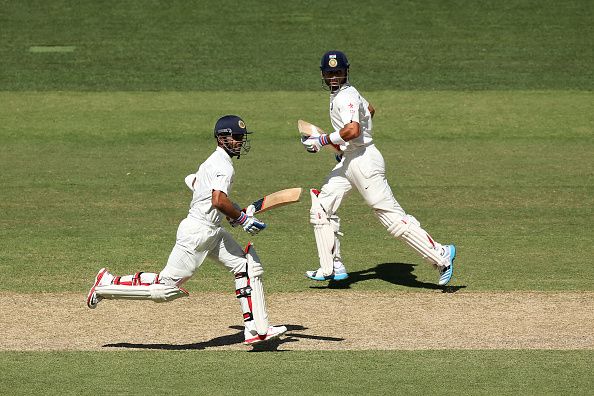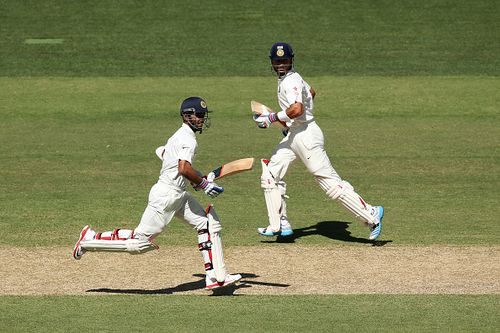
The Melbourne Messiahs: An assuring partnership to savour

They say make hay while the sun shines. It was largely a sunny day with shades of white clouds scattered around.
On a slightly clearer setting 11 years ago, a successful duo had scripted one of its many fabled narratives.
The day began after a briefly promising spell of resistance at the end of the preceding one. Two previous contests were lost, the venue wasn’t conquered in 33 years and a mountain was to be confronted.
In the past, the team has been in similar situations, but they have never overcome; it was naive to expect it be any different this time around too. As the shadows lengthened across the carpet, the summit wasn’t scaled wholly; however, a subtle reference to that event of the past could be ascertained.
It wasn’t as serene as the legend of Adelaide and probably not as monumental as well: it was imperfect, brittle at times, twitchy, but it managed to compose a story for the ages, comprehensively. The craft of scoring runs wasn’t too dissimilar, but the abrasive outlook in which they were put up was largely different from the tranquillity in which the 303 runs were accumulated in 2003. Skills were examined extensively on the day and so was the temperament. The question on whether runs could be scored in Australia was answered in the affirmative; however, the ability to sustain concentration after a verbal face-off remains unanswered.
The last time an Indian notched up a 3-figure knock at the Melbourne Cricket Ground (MCG), in 2003, turned out to be a breathtaking compilation of flamboyant striking. The wait for his successor finally ended, in a slightly more pleasing fashion. Those who recollect the failed glory hit at Delhi in March 2013 wouldn’t have envisaged a certain Ajinkya Rahane being the one to do so.
Having modelled his batting demeanour on Dravid, 2014 has allowed ‘Jinks’ to carve a niche for himself, much like in the manner his hero went about doing so for 16 years. Durban, Wellington and Lord’s were distinctly outstanding, yet the 147 was exceptional in most ways: he outscored the in-form Kohli, executed the pull shot with panache, and the flair in the back foot play was demonstrated equally well. Barring the floored chance by Nathan Lyon, he was largely in cruise control mode on a testing track.
At the other end, Virat Kohli had already embarked on a fresh long journey, something which he has been habituated to over the last couple of years. Nothing on display was unfamiliar, nothing was unseen, and yet the innings of 169 was spectacular. A big hundred in a 56-innings career was coming, and for India’s sake, it coalesced with a big one from his batting partner in a crisis-aversion situation. Runs flowing off the ‘MRF’ labelled cricket bat was a sight to behold over the years, and it was a rerun of sorts in terms of domination, footwork and holistic scoring directions.
Unlike his predecessor, though, Kohli had to bit more to say than just let his bat do the talking. It affected his mojo briefly but his batting prowess made sure he was back on track soon. His off-field partner was blamed for all his failures in England, and he didn’t miss the opportunity to express his emotions on reaching his 6th away ton, quietly banishing all correlations of his personal life with the game.
In the context of the match and the series, the individual hundreds are important and probably pivotal. The fabric knitted during the course of this innings has much more significance and will enroll into folktales. Kohli and Rahane substituted the positions vacated by Sachin Tendulkar and VVS Laxman respectively. The partnership of 262 does comfort the ardent followers of the game, who have been expressing their concerns over the lack of Test match temperament in the current batch of players.
Both fell in the last hour of the day, neither to good deliveries. A ship was carried through tough weather only to miss the shores by a whisker. The day was over, and the contest stood in the balance. Kohli-Rahane did, indeed, make hay while the sun shined!